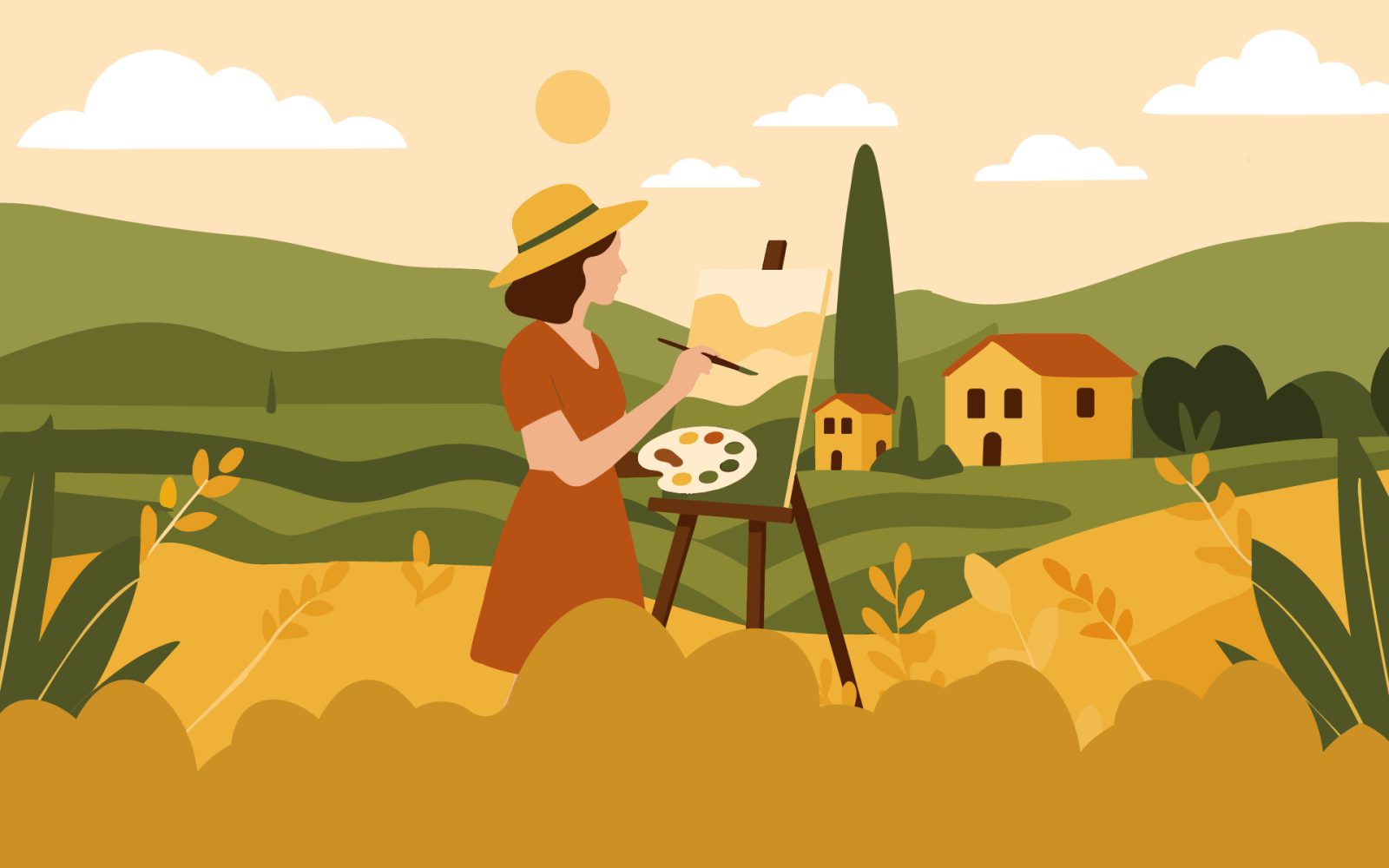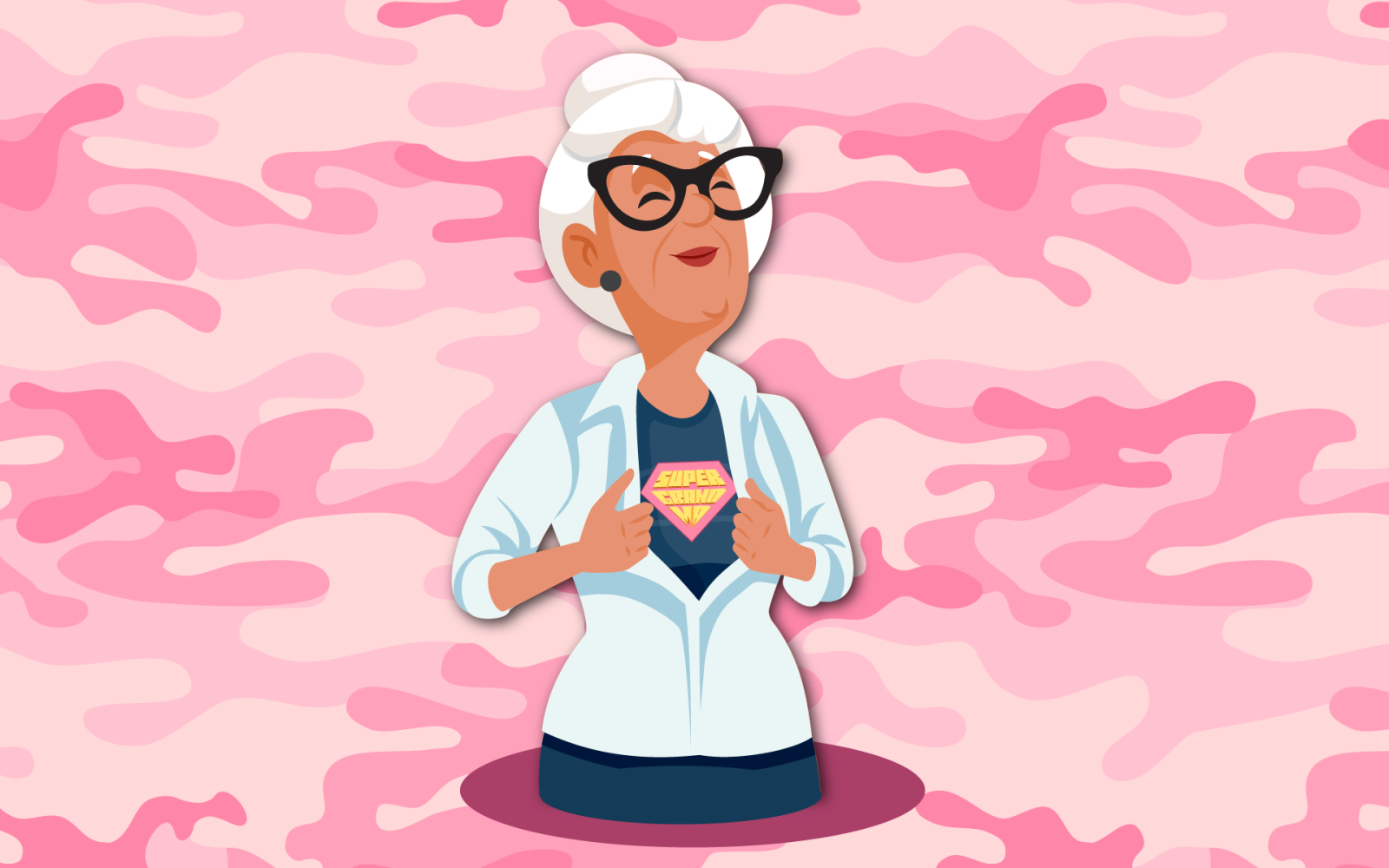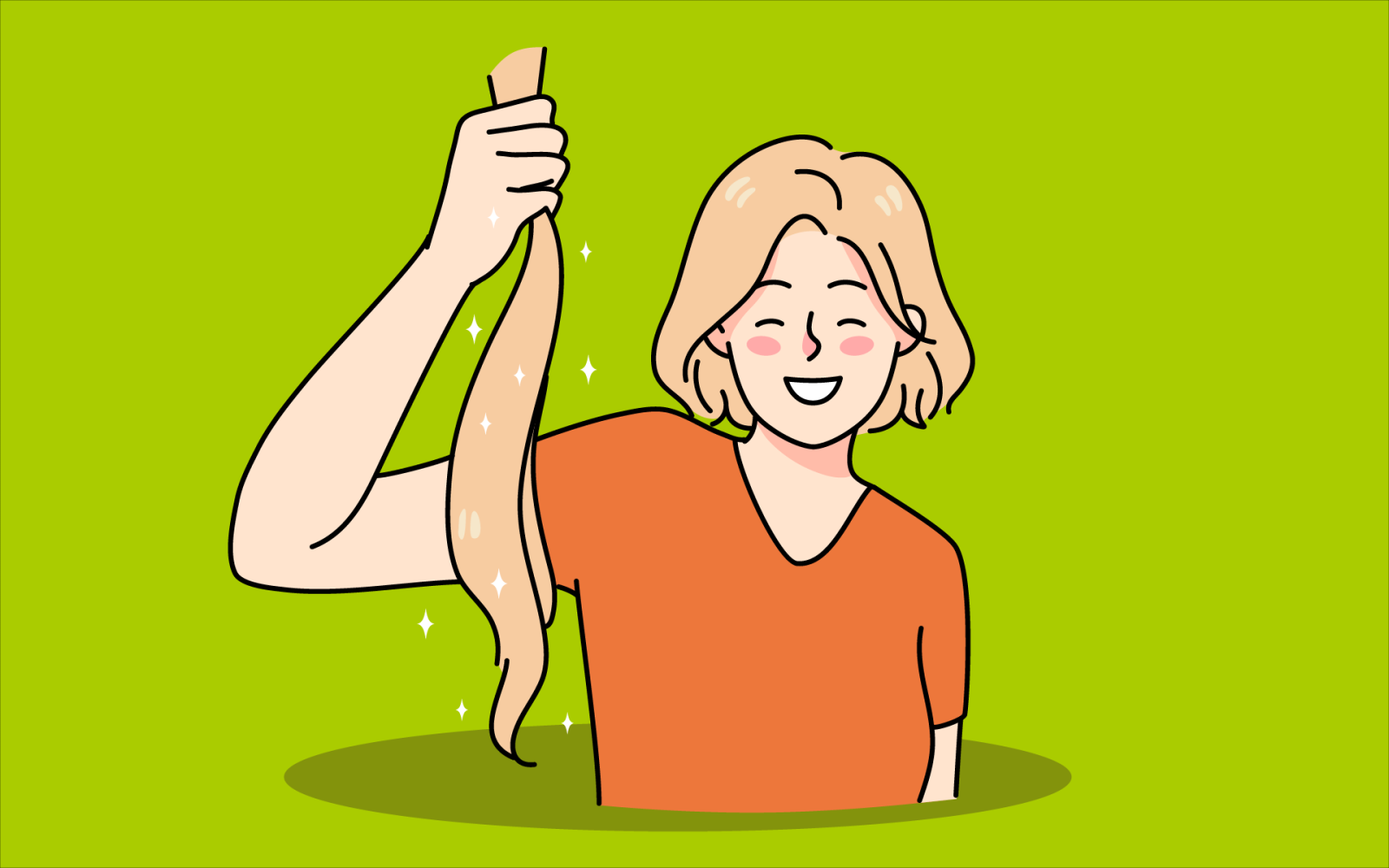Lené du Toit, the DIY Queen of Koffiefontein

Stop at the old coffee fountain, and find the time to take the Free State to heart.
The first thing you see when you drive into the little town of Koffiefontein, about two hours southwest of Bloem, is — you guessed it — a big old copper-coloured coffee pot, spewing water from its spout into the oversized coffee cup below.
It’s the famous coffee fountain of Koffiefontein, paying tribute to the dorp’s origins as a rest stop for transport riders in the diamond-rush days.
On their way to the diggings at Kimberley, they would pause to stoke a fire and brew a pot of strong, dark moerkoffie, so named for the layer of sediment that you find at the bottom of your cup.
You might notice, too, on your way to enjoy a lekker koppie yourself, that the local landmark is looking a lot more colourful, clean, and tidy these days.
The struts of the Koffiefontein sign have been garlanded with paintings of flowers and windmills; the coffee cup has been buffed with a shiny new finish; and the letters on the sign have been embellished with bywords for a better life. “Liefde”, “Vreugde”, “Coffee & Friends Make the Best Blend”.
For Lené du Toit, a teacher at Hoërskool Koffiefontein, the renovation and redecoration of the site has been a long-time passion project, leaving her splattered with paint and beaming with pride.
She roped in friends, family, and fellow Koffiefonteiners to help out, and it’s easy to see why: aside from her natural ability to organise, advise, and inspire people to get down to work (a schoolteacher’s gift), Lené radiates positive energy and coffee-bean buzz.
She speaks with a smile and a fetching Platteland accent — “Ek’s a bosveld meisie,” she says — and she holds the Free State close to her heart. It wasn’t always like that.
Having grown up in Bela-Bela in the Waterberg district of Limpopo, she used to think of the Free State as “flat and empty and dry”.
Then she fell in love with Toitjie du Toit, a veterinary surgeon and farmer whose love of the land won her heart and changed her mind.
But as she soon discovered, living on a farm in the middle of the Free State calls for a certain degree of self-sufficiency, all the more so when you realise that your charming old farmhouse, with its cracked walls and peeling paint, is falling down and is going to take a whole lot of fixing up.
One day, Lené pulled up a woolly old carpet in a bedroom, to discover another woolly old carpet beneath that, and beneath that, yet another.
“I found it very comical,” she says, “so I made a little video of the whole process, and that’s how Dames Doen Dit Self was born.”
Dames Doen Dit Self is a Facebook group with more than 13,000 members, serving as a chronicle of Lené’s DIY projects around the house, and a forum for practical advice and inspiration.
“A lot of ladies who also live in the Platteland, or whose husbands are too busy to help, began doing things for themselves too,” she says.
Lené posts videos of her DIY projects, some of which, she admits with a laugh, are “experimental”. Covering the old porcelain basins in her bathrooms with a cement mixture, for instance.
“Everyone said I was mad to do that,” she says, “but on my third try, I created the most beautiful mixture, and it worked like a bomb. Not the slightest little crack. Now I smear it on everything!”
Every room of the family farmhouse bears testimony to her eclectic style and free-ranging creative spirit, from the driftwood toilet-roll holder to the wallpapered kitchen cupboards to the dried-protea and river-grass bouquets draped on a branch in the black-walled lounge.
She credits her husband Toitjie for his relaxed acceptance of even her most daring doen-dit-self endeavours.
“They say that behind every successful man is a woman,” says Lené, “but I believe that behind every hyperactive, dynamic woman, there is a cool and calm man. He hasn’t ever said no to any of my dreams. He’s never painted over anything I’ve done. He just lets me be my own crazy, deurmekaar self.”
And of course, he fully supports her campaign to beautify Koffiefontein’s most famous tourist attraction, in the hope of attracting more tourists to Koffiefontein.
“We’re very proud of our little town, and we want people to come and see it and like it just as much as we do,” says Lené.
So the next time you’re in the neighbourhood, don’t rush. Stop at the old coffee-pot, admire the painted flowers and windmills, and sit on the brightly-coloured bench with the hand-lettered message that says “Ek was hier”.
And just like Lené did when she first moved here, take the time to take Koffiefontein and the Free State to heart.




